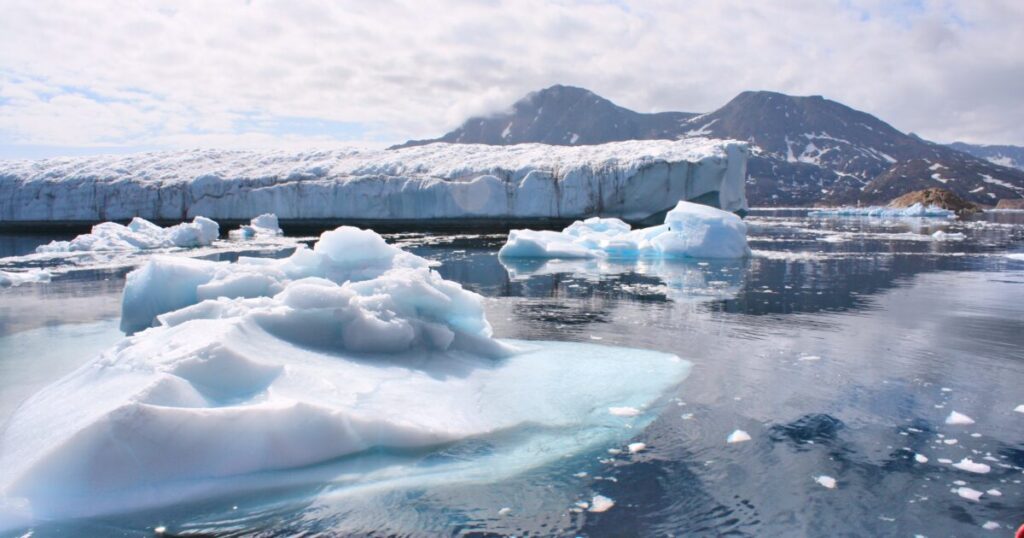Glacier retreat is one of the concepts often used to support the climate crisis narrative.
However, while there is clear evidence that glaciers have been retreating over the past 70 years, and according to NOAA, global average temperatures have risen approximately 1.1°C since the late 1800s, this does not, in itself, prove the existence of a climate crisis.
Globally, the World Glacier Monitoring Service (WGMS) reports over 30 meters of cumulative ice loss among long-term reference glaciers since 1950, with annual losses exceeding 1 meter water equivalent in recent years.
NOAA data shows glacier loss rates increased from -171 mm per year in the 1980s to -889 mm per year in the 2010s.
The WGMS currently tracks about 60 climate reference glaciers across 19 mountain regions, supported by field data from 500 glaciers and satellite data from approximately 200,000 more.
Although most glaciers have been retreating since the 1950s, glaciers naturally advance and retreat over time. Many glaciers were advancing from the 1950s to 1970s due to cooler conditions, and most reached their maximum extent during the Little Ice Age in the 1800s.
While glacier retreat is well documented, whether it constitutes a “climate crisis” is far less certain.
Glaciers have naturally advanced and retreated for centuries due to climate variability, making it difficult to treat current trends as uniquely alarming. The global average temperature rise of approximately 1.1°C since the 1800s is relatively modest and not unprecedented in paleoclimate records.
Regional impacts of glacier melt also vary, some areas may face reduced water availability, while others may benefit from increased runoff.
Many human and ecological systems have the capacity to adapt, further complicating the crisis narrative.
Ultimately, labeling glacier retreat a crisis depends on subjective judgments about risk, urgency, and acceptable change. Research on normative science supports this view, showing that value-laden conclusions are often framed as empirical findings, what Former EPA scientist Robert Lackey terms “stealth policy advocacy.”
The very term “climate crisis” embeds a normative judgment, implying unproven assumptions about human causation, moral obligation, and the urgency of intervention.
Funding structures that reward alarming portrayals of climate data reinforce these assumptions, turning scientific inquiry into institutional advocacy for predetermined policy goals.
For scientific researchers, there are clear economic incentives to support the climate crisis narrative.
According to the Heritage Foundation, federal funding for climate change research rose from $2.4 billion in 1993 to $11.6 billion in 2014, with an additional $26.1 billion provided through the American Recovery and Reinvestment Act. This funding structure creates strong financial motivation to frame findings in ways that support crisis-driven policy.
Lackey identifies this trend as a form of “normative science”, information developed or interpreted based on an assumed, often unstated, preference for particular policy outcomes.
He warns that public policy issues are frequently presented as purely scientific questions, without acknowledging the underlying value judgments embedded in the framing.
Climate change, he notes, is a prominent example of this phenomenon. Supporting this concern, researchers Wojick and Michaels found that federal funding exerts systematic influence on research outcomes, where the prospect of funding influences the result in a way that benefits the funder.
As a result, scientific claims often rest on embedded assumptions that cannot be empirically tested but still shape the direction of policy and public perception.
According to research on funding patterns, funding bodies operate on several unexamined premises, such as the assumption that climate change constitutes a “crisis” requiring intervention – but this represents a subjective value judgment about what constitutes an acceptable versus unacceptable state of nature.
No empirical science can determine what climate conditions “should” exist.
The climate crisis narrative assumes that human behavior is both the primary cause of and solution to climate change. It presupposes that climate change is a problem, that human intervention is both possible and desirable, and that humanity has a moral obligation to alter natural climate systems.
This framework embeds a series of philosophical and political positions, namely, that climate change is inherently harmful, that it can be controlled by human action, and that such control is necessary, while presenting these normative assumptions as if they were scientific conclusions.
The funding structure reinforces this by institutionalizing value-laden premises under the guise of objective research.
The Committee for a Constructive Tomorrow (CFACT), a nonprofit known for challenging climate crisis narratives, reported “If a young climate researcher wants to build a career today, their chances of getting government funding for their research proposals is directly proportional to how seriously they portray the threat of global warming.”
The interaction between funding structures, institutional pressure, and the framing of climate science directly influences how glacier retreat is interpreted.
In congressional testimony, Dr. Judith Curry described “enormous pressure for climate scientists to conform to the so-called consensus,” driven by federal funding agencies, universities, and professional societies, amounting to institutional enforcement of specific assumptions.
This pressure shapes how data, including glacier melt, is presented and understood. Critics argue that even funding categories reflect this bias.
As David Wojick noted, “The CAGW [Catastrophic Anthropogenic Global Warming] paradigm says the warming is mostly due to the carbon cycle.
The natural variability paradigm says it may be largely due to solar cycles,” yet funding structures overwhelmingly support the former while marginalizing the latter.
When only one paradigm receives institutional backing, the interpretation of glacier retreat as evidence of a climate crisis becomes not just a scientific assessment, but a product of selective support and constrained debate.
Read the full article here


